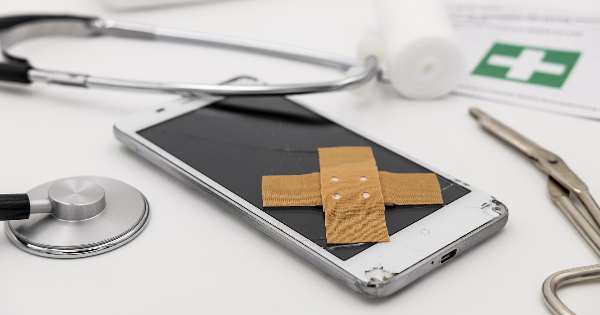We have all done it. Whether the moisture is from a sweaty gym shirt, a smash of coffee, or a full dunk in a swimming pool, everyone has gotten a cell phone wet. In fact, men are nearly 60% more likely to drop a cell phone into a toilet than women. Even so, 40% of women have damaged their cell phones while using it in the bathroom, whether it is from a fall, water damage, or other accident.
Some online sources suggest DIY techniques to rescue your phone from water damage. To understand why this is mistaken and why you need to seek out a nearby cell phone repair Tampa location, you need to understand how water damages your phone. Here are four reasons your water-damaged cell phone might not work:
Moisture Sensor
Many cell phones include a moisture sensor to shut the cell phone down when it gets wet. This serves two purposes.
- Shutting down the phone at the first sign of moisture can prevent or limit internal water damage to the cell phone.
- The moisture sensor tells cell phone repair technicians the source of any damage was water. This is important since water damage is not covered by warranty.
If you are very, very fortunate, your water damaged cell phone is not actually water damaged. Rather, it may have just been shut down by the moisture sensor and need a cell phone repair shop to test the phone for damage before you power it up again.
Older iPhones, for example, were susceptible to voided warranties because of moisture sensors that were triggered by sweat or condensation. Under these circumstances, an iPhone repair Tampa technician can examine the iPhone and give you the go-ahead to power up your iPhone.
Short Circuit
In any electrical device, a short circuit can cause malfunctions, damage, or even electrical fires. Short circuits occur when electrical current travels along an unintended path through a conductor bridging two parts of the circuit that were not meant to be connected.
Pure water is an insulator, but most water is not pure. Instead, it contains dissolved minerals that ionize the water and allow it to carry a current. When water bridges connections on a circuit board, current can travel through the water, creating short circuits. This unintended current can fry electronic components throughout the phone, including the data processor, memory, cell transmitter/receiver, display screen, microphone, and speakers.
If components have been fried by short circuits, a cell phone repair shop can test the various components and determine what needs to be replaced. This testing could determine that, for example, the phone powers up but a fried screen makes it look as if the phone is dead. In this example, the fix would be to simply replace the screen.
Battery Overload
Worse yet, water can bridge the terminals of the battery. When this occurs, the battery can become overloaded, destroying the internal chemistry of the battery.
When the internals of the battery are destroyed, current will not flow out of the battery preventing the phone from powering up. Similarly, current will not flow into the battery preventing the battery from charging.
Under some circumstances, a shorted battery can be a blessing in disguise. Once the battery dies, there is little or no residual current in the phone to damage other components. In that example, the death of the battery might save the phone from other damage.
Corrosion
Corrosion occurs when an anode and cathode exchange electrons through an electrolyte. Metal wires and contacts on circuit boards can, when wet, corrode very quickly. There are a few reasons for this.
- The wires and contacts are conductors meant to carry electrons.
- The wires and contacts are very small. This means that very little water and very little corrosion can have a very large impact on the wires and contacts.
To prevent long-term damage from corrosion, cell phone repair technicians will open up the phone and thoroughly dry every contact and exposed wire using alcohol.
Water damage phone repair can be scary. However, a cell phone repair Tampa shop can check your moisture sensors, test for fried components and batteries, and clean up any corrosion to try to mitigate any damage.

